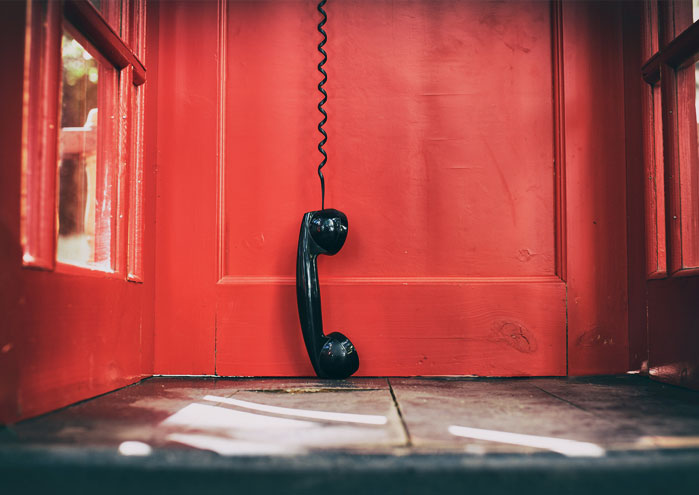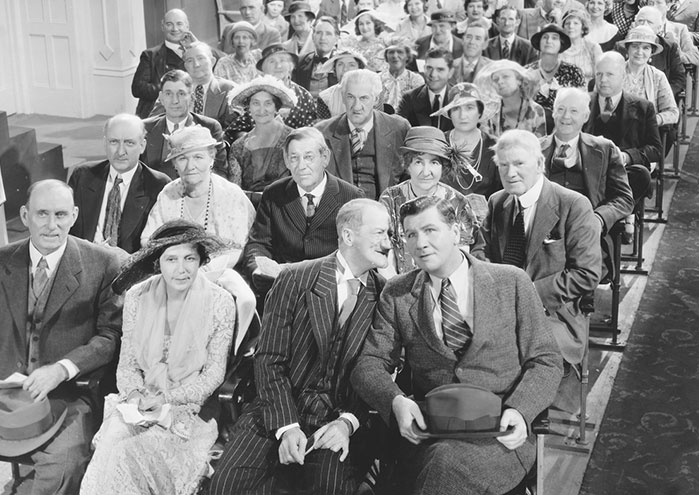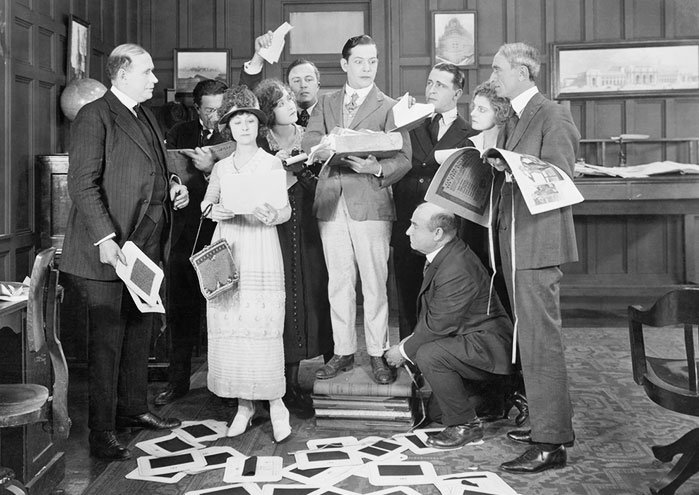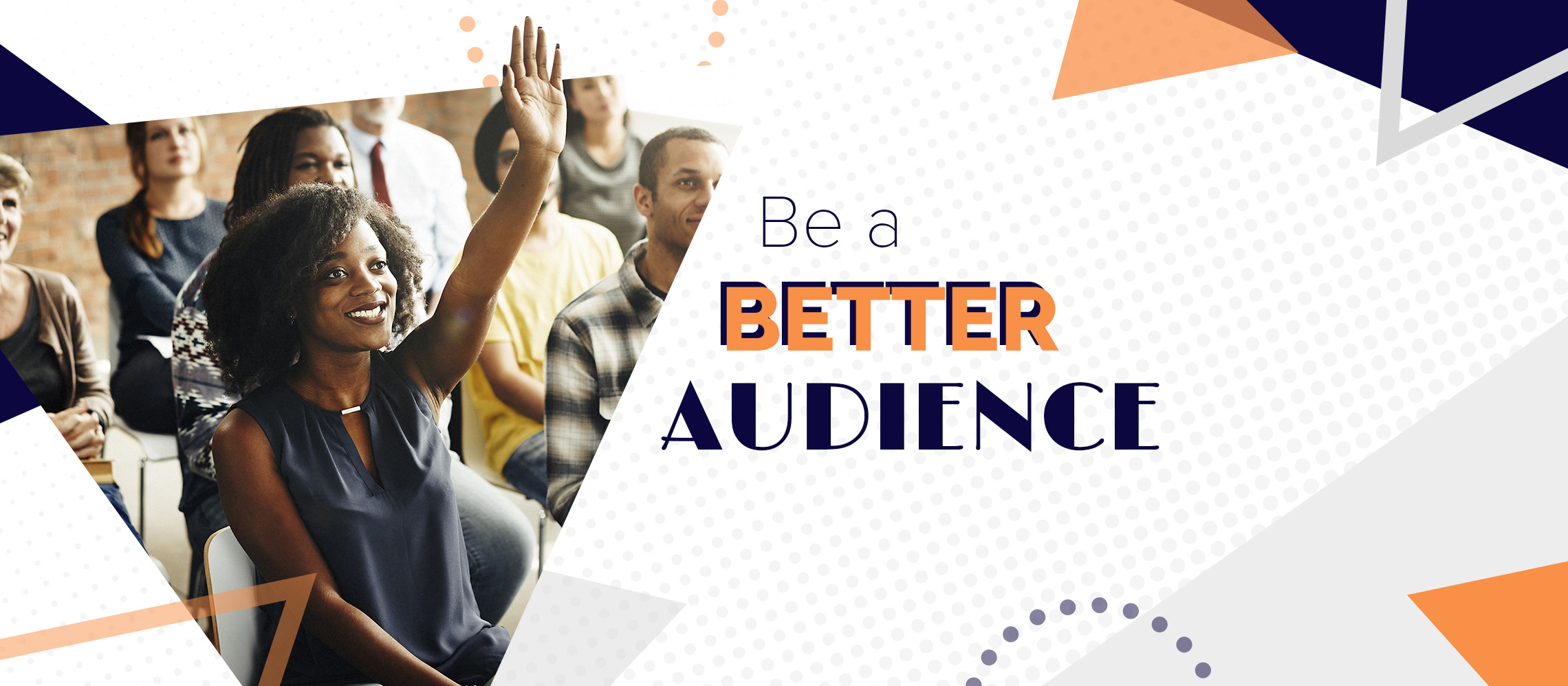Can I have your attention, please?
In the Buffalo 7 studio, we work hard to craft incredible presentations for the world’s best brands, but what if it’s all for nothing because their audience doesn’t know how to listen?
Every presentation that leaves our studio is looking to make a change. It may be a change in the audience’s knowledge, their opinions, or just the company that supplies their stationery. We craft razor-sharp messaging, design clear hierarchies, support ideas with relevant visuals and break down complicated information through intelligent animation: all to ensure the story is told.
But telling stories is only half the battle. For your story to make a change, to have an impact, you need someone to listen. And I mean properly listen, not just be within hearing distance. They need to comprehend your message, retain it, and be able to pass it on accurately.
In early years’ development, the focus is on teaching children to listen and attend, as a foundation for learning. In fact, by the time most of us reach our fifth birthday, we have the ability to be taught in a group setting, such as a presentation. But as we move into primary and secondary education, the teaching style changes and reading becomes the primary source of learning. By the time we reach adulthood, and in no small part due to technology, it seems we’ve completely forgotten how to listen.

In one study, adult participants were asked to sit through a ten-minute presentation and, later, to describe its key messages. Immediately after leaving the room, participants struggled to recall half the information conveyed to them, and eight hours later the retained information dropped to just twenty-five percent. If only one quarter of a Buffalo 7 presentation is memorable, despite our every effort to aid comprehension, we’re going to have to address the root of the problem instead.
Today, we want to turn back time. We’re going to take you all back to school and instil some good listening practices. This is how to be a better listener.
How to become a better listener
Don’t multi-task
There are distractions all around us, and we may think we’re good at multi-tasking, but you might be surprised to learn how severely your ability to comprehend is impacted by distractions. The fact that The National Safety Council estimates that 1.6 million accidents are caused annually by mobile phone use and texting while driving is an extreme example of how useless we are at multi-tasking.
However, a study conducted by Carnegie Mellon University, found that the mere possibility that your phone may ring diminishes your cognition skills by up to twenty percent. And if you’re currently thinking that this doesn’t apply to you, think again. The same study also showed that people wildly overestimate how good they are at listening.
External distractors are the easiest to control. Even as an audience member, we can play our part in removing distractions from a presentation setting. Make sure you leave your phone out of reach, you’re not shifting in your seat, tapping your leg, or whispering to the person sat next to you, in order to have the best chance of soaking up the information.

Be present
“Most people don’t listen with the intent to understand. They listen with the intent to reply.”
Stephen R. Covey
Clearing your mind of distracting thoughts can be a lot harder to accomplish. But if you’re just thinking about a meeting you have later that day, or whether someone might be trying to call you, then you may as well not be there, because you’ve already missed a big chunk of the point.When these distracting thoughts do show up, the trick is to allow them to come into your mind and let them leave again. And this takes practice. We can listen to hundreds more words per minute than we can say, which is why your brain has all that extra time to start wandering off when you’re meant to be listening to a presentation. You just need to train yourself to focus, stick with the speaker and remember why you’re there. Apps, such as Headspace, have been designed to train your brain in this very method.
Everyone is an expert in something
“True listening requires a setting aside of one’s self.”
M Scott Peck
Imagine you’re at the hairdresser and you say, “I’d like my hair quite short please”. In your mind, you’re imagining a sleek, sexy bob that falls around your shoulders. But, in your hairdresser’s mind, ‘short’ means a buzz cut. Do you see the problem? If you’re only drawing on your own beliefs and experiences, you’re never going to learn anything, and communication is never going to be clear. In every conversation, we need to start from a place of common ground and work to truly understand what the other person is saying, rather than hearing their words and translating it to fit our beliefs. It’s our job as the audience to be the blank canvas for the presenter to imprint on, at least for that brief time when they’re speaking. Following that, you can make up your own minds.
Enter every presentation assuming you have something to learn, and leave your beliefs and predetermined opinions at the door. We’re all guilty of forming opinions about someone before we talk to them. Maybe we follow them on social media and they really like posting ‘inspirational’ quotes, or a trusted friend has warned you about their extreme political views.

You may think you fundamentally disagree with them on every level, but how can you know until you’ve heard where they’re coming from, what their story is? We need to be open and unbiased in order to communicate clearly, and we need to make sure we align on our understanding, before we make any final decisions.
What if I don’t go to a lot of talks?
Maybe you’re thinking you don’t attend that many speaking events, so this must not apply to you. Wrong. All we’re really talking about here is how to listen. Every one of us can apply these learnings to what we do every day, in every meeting and every conversation we have. Here are some tips to elevate your next meeting:
Assign one person to take notes
If your office is anything like our Treehouse studio, meetings are a passionate flurry of scribbling, with heads pointed down towards paper, rather than facing the person talking. We’re all concerned with later forgetting something, so we’re in danger of not really paying attention in the first place.
If you’re constantly looking at your notepad and focusing on writing every word uttered, you’re throwing away the opportunity to absorb all the valuable non-verbal communication the speaker is putting out there, through their facial expressions and gestures. You’re also putting a huge barrier between you and a human connection by not looking at the person who’s speaking.
Assign someone whose sole responsibility it is to take notes, so that you can focus on absorbing every form of communication.
Leave your script behind
When you enter that board room, leave all other thoughts at the door. And leave your script behind. If you’re reading questions off a list, or methodically working your way through the set agenda, you’re not having a conversation. You should allow every meeting to evolve naturally. This doesn’t mean excruciatingly long, chaotic meetings with nothing accomplished by the end of it. You should still prepare and send a list of tasks to be accomplished in advance, just don’t fixate on moving from a to b to c. If the conversation moves from a to d to b, let it.
The colleague that you assign as notetaker can let you know if any questions or topics have been missed, and keep you from veering too far off track. This will allow you to be truly present, and will let the natural flow of the conversation set the agenda, which brings me to…
Shut up and let them talk
“If your mouth is open, you’re not learning.”
Buddha
An important part of communication is learning when to guide the conversation and when to just shut up and let another person talk. Too many meetings turn into a battle of egos, with everyone wanting to make themselves heard. But if you’re all trying to be heard, who’s left listening? You guessed it, no one.

People are scared of silences, but there’s an important difference between a silence that’s giving the other person some breathing space to consider whether they’ve fully explained their viewpoint, and a silence that signals a breakdown in communication. I understand that when you’re talking, you feel in control and you feel like you have the attention of the room, so it’s safer, but this is how the other person should be feeling. And they should be feeling listened to, which they won’t if you’re doing all the talking.
Ask open-ended questions
When they do need a nudge to extract relevant information, always ask open-ended, unbiased questions. You have no idea how much influence you can have on someone’s response when you ask, “Do you hate this?” versus, “How do you feel about this?”. This isn’t the time for mind tricks, if we’re really interested in communicating effectively, we want to know their honest opinions.
It can be tempting to ask questions that only require a yes or no answer, because they’re efficient and they deal exclusively in facts. However, by doing this, you are stopping the conversation before it begins. Open questions give the other people in the room the chance to share opinions and emotions, and they hand control of the conversation over to the respondent.
Imitation is the sincerest form of flattery
We’ve all had a good conversation at least once in our lives. A conversation where you walk away feeling understood, engaged, and as though you made a real connection with someone. Every time we leave a conversation, we should feel confident that we’ve understood the other person completely, and they should feel the same level of confidence in our comprehension.
So, I’d like to leave you with this task:
Think about someone you really enjoy talking to. It might be a friend that you go to when you have a problem, or a family member that always makes you feel really good about yourself. What is it they do that leaves you feeling listened to?

Bottle that up and emulate it the next time you’re in a meeting, or even just a conversation with a colleague. Channel this person and their behaviours to leave your clients, friends or local newsagent feeling like you truly get them.
If we each start to imitate and pass on these good listening skills, maybe we’ll be able to learn a lesson from our five-year-old selves and improve communication in all our adult conversations.


